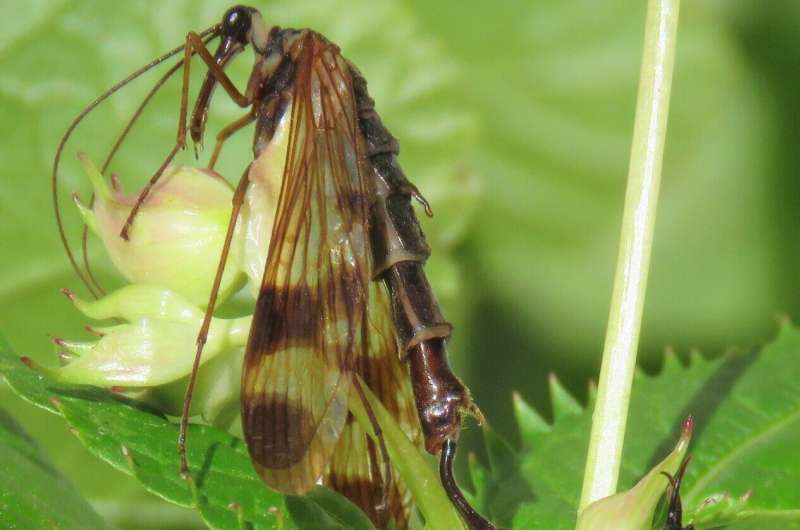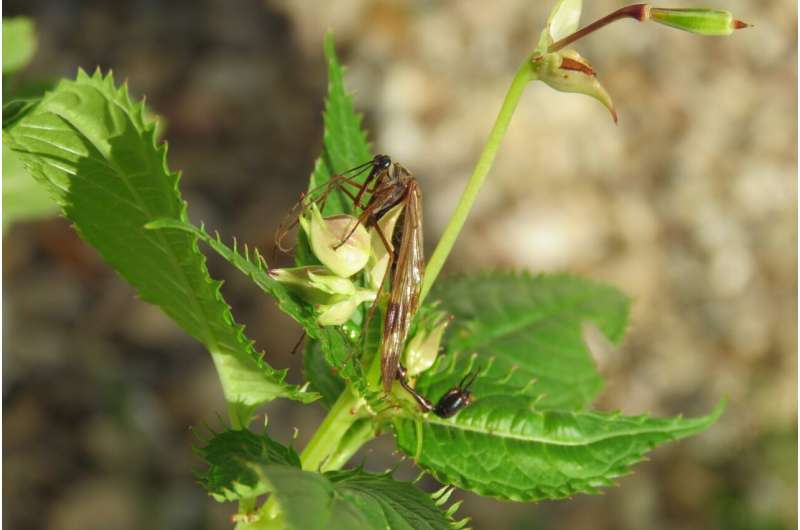Newly discovered scorpionfly genus with bizarre appearance

Zoologist Professor Rainer Willmann, former Director of the Zoological Museum at the University of Göttingen, has described and classified previously unknown species of scorpionflies from Nepal. These species belong to a completely new genus, for which Willmann has introduced the name “Lulilan.” His paper was published in the journal Contributions to Entomology.
“The appearance of the newly discovered scorpionflies could hardly be more bizarre,” says Willmann.
The males have a spindly, extremely elongated abdomen, at the end of which is a large organ—with long, grasping pincers—for mating.
The insects have a body length of more than three centimeters, meaning they are particularly large. The insects were captured by the Mainz zoologist Professor Jochen Martens and his colleague from Stuttgart Dr. Wolfgang Schawaller. Until now, only one such species was known and that was discovered exactly 200 years ago.
“Despite their dangerous-sounding name, scorpionflies are completely harmless to humans,” says Willmann. Their name comes from their spherical genital segment, which looks like the sting of a scorpion. They also have a distinctive, elongated head.
In Europe, there are only a few species of scorpionflies. “More species of Lulilan probably exist in Nepal and the surrounding regions,” Willmann says. So far, only the females of some types are known. Unlike the males, however, the females have none of these characteristic features, meaning that classification is more difficult.

From the scorpionflies that have already been described, only the genus Leptopanorpa, which is native to Sumatra, Java and Bali, has developed such a distinctive abdomen. However, it is not closely related to Lulilan.
“This is an amazing example where similar characteristics emerge independently, perhaps in response to similar evolutionary pressures,” says Willmann.
More information:
Rainer Willmann, Neue Skorpionsfliegen (Mecoptera, Panorpidae) aus Nepal, Contributions to Entomology (2022). DOI: 10.3897/contrib.entomol.72.e97277
Citation:
Newly discovered scorpionfly genus with bizarre appearance (2022, December 12)
retrieved 12 December 2022
from https://phys.org/news/2022-12-newly-scorpionfly-genus-bizarre.html
This document is subject to copyright. Apart from any fair dealing for the purpose of private study or research, no
part may be reproduced without the written permission. The content is provided for information purposes only.
For all the latest Science News Click Here
For the latest news and updates, follow us on Google News.

